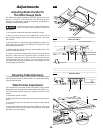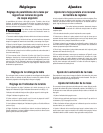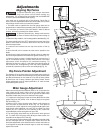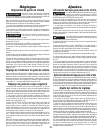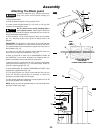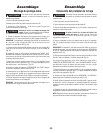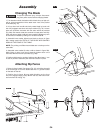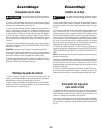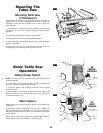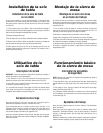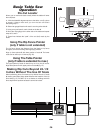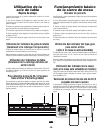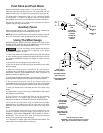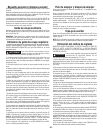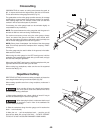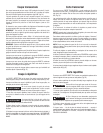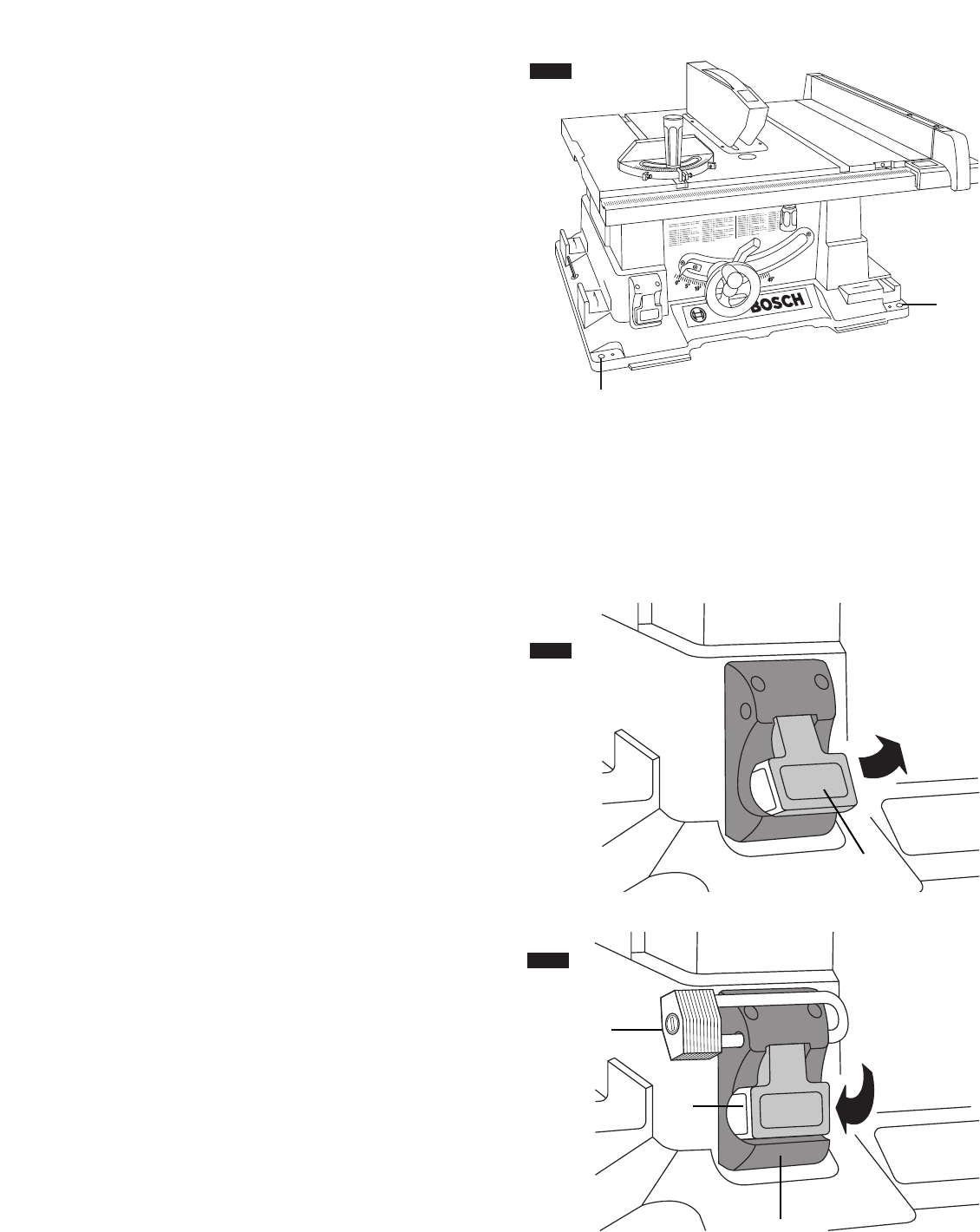
1
1
FIG. 22
36.
Mounting Table Saw
to Workbench
If table saw is to be used in a permanent location, it should be
fastened securely to a firm supporting surface such as a stand or
workbench, using the four mounting holes, 1 two of which are
shown (Fig. 22).
1. If mounting to a workbench, the base should be bolted securely
using 5/16" hex bolts (not included) through mounting holes 1
provided.
2. Locate and mark where the saw is to be mounted.
3. Drill four (4) 3/8" diameter holes through workbench.
4. Place table saw on workbench aligning holes in base with holes
drilled in workbench.
5. Insert four (4) 5/16" dia. bolts through holes in base and
supporting surface; then secure with (4) 5/16" hex nuts.
Mounting The
Table Saw
FIG. 23
Safety Power Switch
NOTE: This table saw has a safety feature that helps prevent
accidental starting.
1. To turn saw on, lift switch lever 2 by pinching side walls and
pulling up. This action starts the saw (Fig. 23)
2. To turn off power, push switch lever 2 down to it’s original
position (Fig. 24).
3. Switch 3 can accommodate a padlock 4 with a long, 3/16"
diameter shackle (not provided with table saw), to prevent
unauthorized use (Fig. 24).
Work Helpers
Before cutting any wood on your saw, study all of the “Basic Saw
Operations”.
Notice that in order to make some of the cuts, it is necessary to
use certain devices, “Work Helpers”, like the Push Stick, the Push
Block and the Auxiliary Fence, which you can make yourself (See
pages 40 & 41).
After you have made a few practice cuts, make up these “helpers”
before starting any projects. Make the “Push Stick” first.
Basic Table Saw
Operation
FIG. 24
2
2
3
4
ON
MARCHE
ENCENDIDO
OFF
ARRÊT
APAGADO



